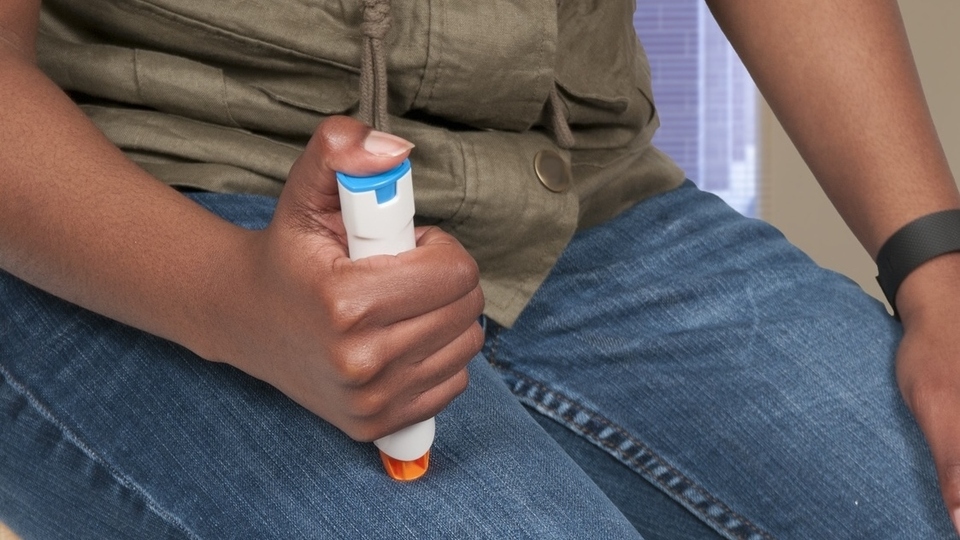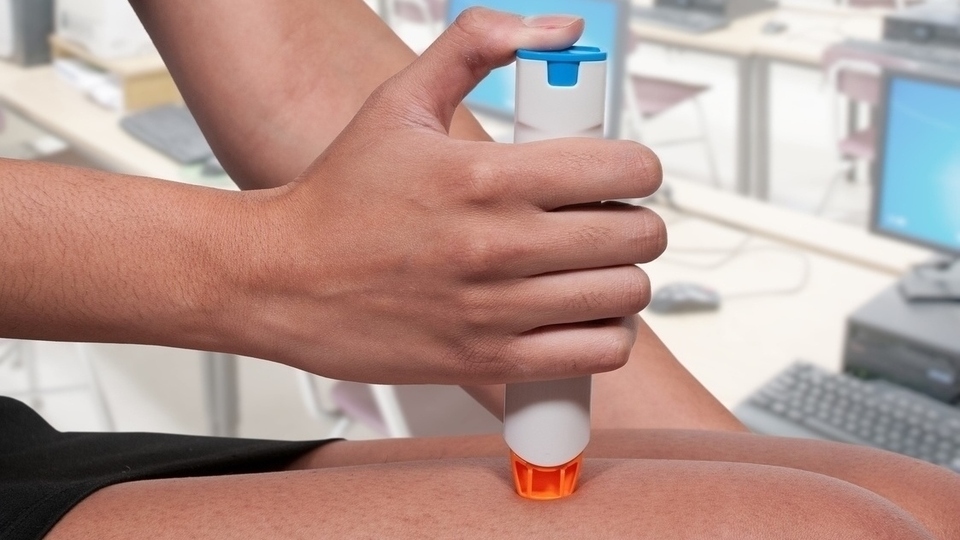A few summers ago, my fellow teachers and I returned to work to discover that our elementary school was now a Peanut Aware Zone. One of our new students was so allergic to peanuts, that just sitting next to another student who was munching on a peanut butter and jelly sandwich could cause a reaction. Not just a reaction, but anaphylaxis, a sudden allergic reaction that puts the child in great danger. During anaphylaxis, breathing is restricted, blood pressure drops, and the child’s tongue can swell, closing off the airway. According to The American Academy of Allergy, Asthma and Immunology, 1.2 percent of children have an allergy to peanuts, with 20 percent of those children experiencing anaphylaxis. Epinephrine, if given immediately, can reverse and end the progression of the allergic reaction.
The safety of this child depended on us as a school community, working with his parents and doctors, to have a plan in place to keep him safe. Our student always sat at a table removed from the others in the lunch room. The students from his classroom took turns sitting at the peanut aware table to keep him company. Parents of the other students were briefed on what to pack or not pack in their child’s lunchbox to ensure that the table was always peanut-free.
As a school community, we all needed to understand the symptoms of anaphylaxis and what to do if the student experienced this allergic reaction. Death from anaphylaxis can occur if treatment with the anti-allergen epinephrine is delayed. We were told by our district nurse to look for swollen lips, pale skin due to low blood pressure, and difficulty breathing. A person experiencing this type of severe reaction may also report an itchy mouth or a metallic taste.
All teachers were also trained to administer the “EpiPen.” This life-saving, self-injecting pen went everywhere with the student and we all knew how to use it. When this student was older, he would be shown how to self-inject this important and potentially life-saving medicine. During one of our summer staff meetings, our school nurse demonstrated how to use it and gave us time to practice with empty cartridges. The epinephrine pen, if ever needed to stop anaphylaxis, could be jabbed directly through the student’s clothing. We were instructed to inject with the pen and then go immediately to the phone to signal an ambulance. After a shot of epinephrine is given, the patient may remain in the emergency room for several hours. At that time, doctors may also treat with anti-histamines and asthma medicines to help the patient fully recover from the severe allergic reaction.
As children grow, they may become less sensitive to the allergen and studies have shown that about 20 percent of children outgrow it completely.
Sources:
http://www.aaaai.org/media/statistics/allergy-statistics.asp
http://www.foodallergy.org/section/a
http://www.foodallergy.org/section/for-school-professionals-educators





Add a CommentComments
There are no comments yet. Be the first one and get the conversation started!